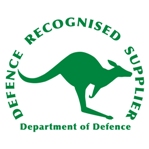Cleaning and General Care
General Care (all metal products) – most of the operations and maintenance procedures are common throughout the Davell range of products.
Powder Coat Finish
A powder coat thickness of >60 microns is applied to all metal products. This thickness allows the product to take scuffs and scrapes without chipping and exposure to bare metal.
Cleaning & Maintenance
To keep your lockers in pristine condition, Davell highly recommends that you follow these three steps to cleaning powder coated surfaces:
1. Regular washing of the coated surface using a soft clean cloth and a mild non-abrasive pH neutral liquid (preferably hand dishwashing detergent) and warm water, clean the powder coating to remove dust, salt or other deposits.
2. Always rinse using fresh water with a mildly damp cloth to remove any remaining detergent.
3. Remove any moisture using a soft dry cloth.
For the removal of grease, paint or hard to remove marks the following products can be safely used: Methylated Spirits or Isopropyl Alcohol (IPA) then rinse off with clean fresh water.
Do not rub powder coated surface excessively, especially pearlescent finishes.
Warning: In some cases, strong solvents recommended for thinning various types of paints and also for cleaning up mastics/sealants are harmful to the extended life of the powder coated surface. These include: turpentine, white spirits, thinners, citrus based cleaners and other aggressive solvents.
These items may be harmful to the extended life of the powder coated surface and should be avoided as the damage may not be visible immediately and may take up to twelve months to appear.
Using these products will render the warranty null and void.
Loading of Storage Units
All storage units should be located on a suitable level surface.
Always load the storage unit from the bottom first.
Warning: Do not use the product as a support structure for other storage systems or furniture.
Do not climb up or stand on product.
Storage of Units in Damp Locations
Damage to products caused by exposure to moisture/liquids/dampness/humidity will not be covered by Davell’s warranty under any circumstances.
Hinges
Hinge maintenance should not be required if used in a protected environment under normal operating conditions.
It is recommended that under humid conditions light machine oil be applied regularly to the hinge pin.
Warning: Do not swing, pull or push excessively on the door as this will cause damage to the hinge.
Locks
Overtime, some keys can become progressively more difficult to insert into the lock and turn. If this problem persists apply a small amount of graphite powder or ‘Dry Glide’ (these products can be purchased from your local hardware) to the key then work it in and out of the lock a few times to lubricate the internal mechanism.
Warning: Do not use oil of any type to lubricate the mechanism, as this attracts dust and other tiny particles which will affect the locking operation.
Should the problem persist, locks can be easily replaced on site, this is done by removing the circlip or nut which holds the lock firmly in-place and wriggling the lock out of its cut-out.
Insert the new lock, making sure it is set in the correct position then replace the circlip or nut.
Note: Some locks contain removable cylinders whereby the cylinder can be taken out of the housing and replaced.
If you are unsure if your product has a removable cylinder please contact Davell Products.
Tambour Door Cabinets
The slats should be cleaned with a mild solution of soapy water.
Do not use any abrasive agents as these may damage the surface finish.
The black plastic tracks that the door runs along should be periodically vacuumed to remove any loose particles and dust that may affect the sliding of the doors.
Never use excessive force to move the doors, if the doors become difficult to move check for any obstructions in the track or overhanging items on the shelf catching as the door runs past.
Issued: 1st January 2008
Revised: 7th March 2025







